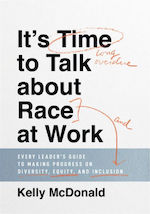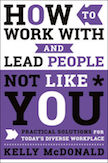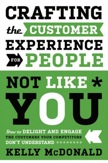How to Work With and Lead People Not Like You:
Practical Solutions for Today's Diverse Workplace
If you're in a diverse team, you know employee differences can cause miscommunication, lower trust, and hurt productivity. . . It doesn't have to be this way!
The people you work with may be from a different generation, different culture, different race, different gender, or just a different philosophy toward work and life in general, but you need to work together toward a common goal. How to Work With and Lead People Not Like You explains how to dial down the differences, smooth out the friction, and play upon each other's strengths to become more effective, more productive, and less stressed. The keys are to find the common ground and identify hidden conflicts that are hurting productivity.
Many people shudder at the prospect of working with diverse groups of people, but they can't voice their fear or anxiety. At work, it's not OK or politically correct to say, ‘I'm uncomfortable with this person.' In fact, if you do say something along those lines, your job may be at risk. Your company may terminate you for not being on the ‘diversity bandwagon.' So you keep quiet and you keep your thoughts to yourself. But deep down, you are uncomfortable.
If you feel like this, it doesn't mean you're racist, sexist, ageist, homophobic, or any other negative label. It means you're struggling.
You're struggling to understand people, cultures, or values that are unfamiliar to you. You're struggling to do your job with teammates and coworkers who may have very different viewpoints or different approaches to communication than you have. You're struggling to overcome differences and pull together to achieve high performance at work.
Whether you're leading a diverse team, working in a challenging cross-cultural environment, or simply working with people who are ‘not like you,' you need to be able to get along with everyone as a team, to get the work done. This book explains the skills you need to communicate, motivate, and inspire people to collaborate—even if they have very different values, lifestyles, or priorities.







